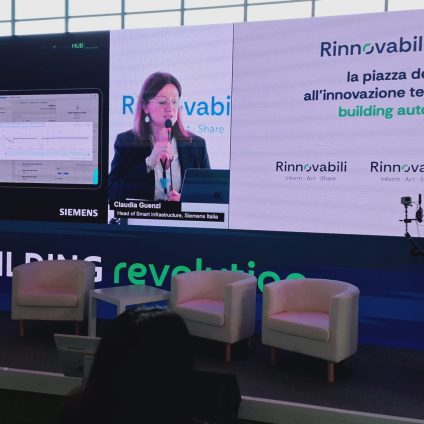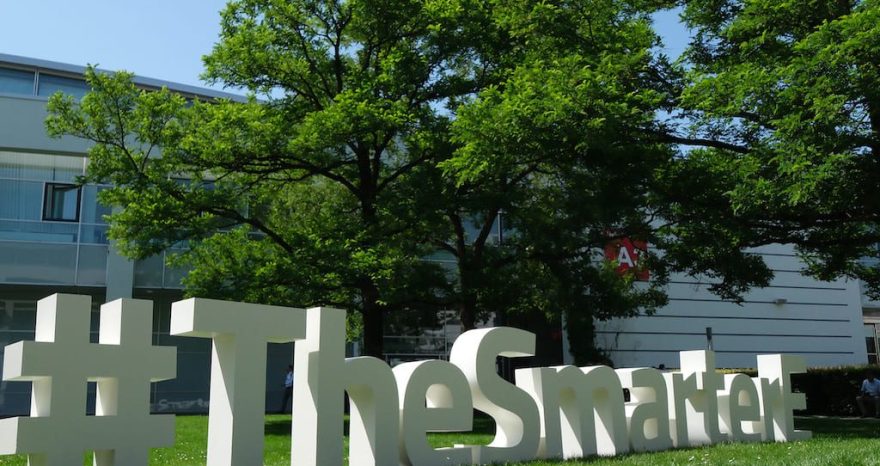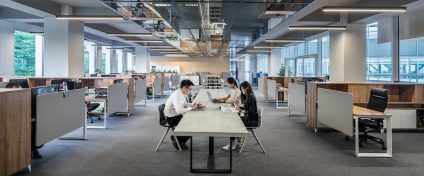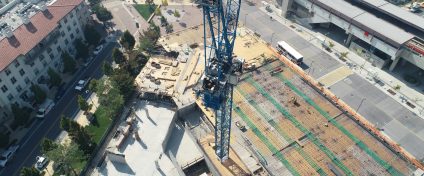Net zero buildings are the strategic response to climate change. Today, it is essential to integrate advanced digital solutions into building systems, combining digitalization and the energy transition. Claudia Guenzi, Head of Smart Infrastructure at Siemens Italy, explains in detail the reality and potential of smart buildings
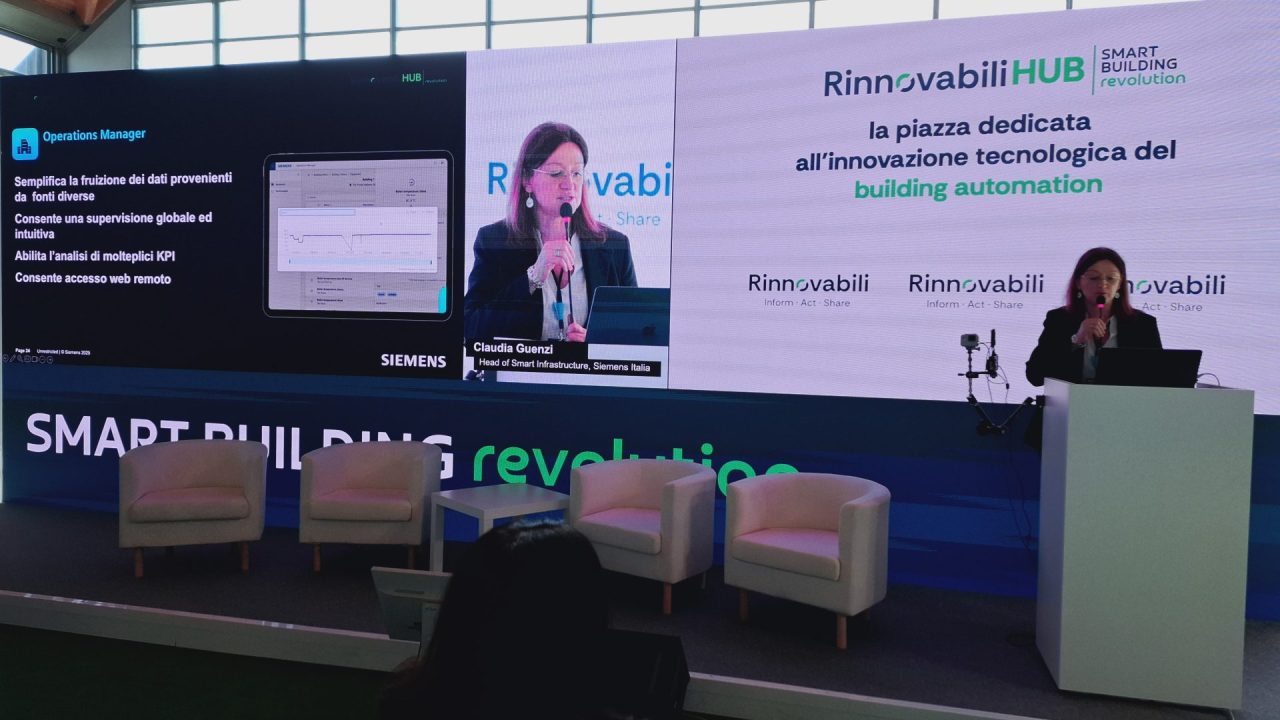
At KEY 2025, we spoke with Claudia Guenzi, Head of Smart Infrastructure at Siemens Italy, to understand how smart buildings are shaping the energy transition.
How does Siemens see the evolution of smart buildings, especially given the growing demand for sustainability and energy efficiency?
Buildings play a critical role in the fight against climate change—not just in improving energy efficiency, but in actively reducing CO2 emissions and mitigating global temperature rise.
To meet these challenges, advanced digital solutions must be fully integrated into building systems. This is the essence of the “twin transition”: the convergence of digitalization and energy transformation.
To contribute meaningfully to sustainability and efficiency goals, buildings must be digitalized to harness the massive amount of real-time data they already generate through management systems.
Until recently, much of this data was only partially used through BMS (building management systems). But today, platforms like Siemens’ Building X allow it to be collected into an intelligent data lake.
This enables correlations between various data streams—such as indoor and outdoor temperatures or occupancy levels—to optimize building operations and predict issues before they occur.
Digital technologies do more than gather data—they make it actionable for all stakeholders. From maintenance teams and building managers to owners, everyone gains access to strategic insights.
This shift moves building operations from reactive to predictive. It allows for energy optimization, early detection of faults, and detailed, tailored reporting.
In short, digitalization is not optional. It’s the key to achieving sustainability, energy efficiency, and operational excellence in tomorrow’s buildings.
What technologies is Siemens developing to make buildings more sustainable? Can you give some practical examples?
Building X is the core platform behind Siemens’ commitment to sustainability, efficiency, and digitalization. It’s comparable to a smartphone’s operating system.
Rather than replacing traditional BMS, it integrates with it and pulls data from any on-site device.
This approach consolidates data into a single stream, making it usable by applications developed by Siemens or its partners.
Our partner ecosystem plays a crucial role. In a fast-moving market, strategic partnerships—including with small, specialized companies—allow us to offer a broader range of solutions enriched by external expertise and technologies.
Applications born from this integrated approach enable a wide range of use cases, tailored to the unique needs of different buildings and stakeholders. These lead to concrete, customized solutions for sustainability, energy efficiency, and smart management.
How is renewable energy integrated into smart buildings, and what are the main challenges of adopting these technologies at scale?
A net zero building should no longer be seen as a passive energy consumer. It must play an active role by integrating renewable technologies—from heat pumps and rooftop or façade-mounted solar panels to innovations still emerging.
A building should be viewed as a flexible node within the energy ecosystem, not an isolated unit. Flexibility is critical.
Today’s technologies allow for energy loads to be shifted to different times of the day without compromising occupant comfort. This supports the energy system by using more energy when it’s plentiful and cutting consumption when it’s scarce.
In solar-powered systems, for example, energy is most abundant in midday hours, but limited in the morning and evening. Shifting residential and industrial energy use to match this pattern transforms buildings into “prosumers”—both producers and consumers of energy.
Net zero buildings must maximize this dual role. Energy flexibility, where buildings can return energy to the grid, is already widespread in Northern Europe and is gaining traction in Italy.
In recent projects, our focus has extended beyond energy efficiency to the building’s full environmental footprint. Integrated design—considering both structural and energy aspects—is becoming the standard, with growing emphasis on energy certifications and overall sustainability.
Energy autonomy is key to future building projects. How do Siemens’ solutions support self-sufficient buildings?
Achieving full energy autonomy means a building must be able to generate as much energy as it consumes.
For a fully green building, that includes renewable generation and battery storage systems.
These allow buildings to store energy when it’s available and use it when production dips, supporting true energy self-sufficiency.
Net zero buildings are no longer theoretical. A prime example is Gioia 22—one of Milan’s tallest skyscrapers and the first in Italy to be certified net zero.
The building combines innovative technologies with Siemens’ Desigo building management system, which not only oversees energy generation and consumption but also aligns building needs with available renewable energy.
Gioia 22 is also a flexible asset for the grid. It can release energy back into the system, helping balance supply and demand. This allows buildings not just to meet their own needs, but to strengthen the energy grid’s resilience and efficiency.
How can design and technology better serve users’ comfort and well-being? What solutions does Siemens offer?
The user is at the heart of every smart building. Even the most efficient or low-impact structure must provide comfort to be considered successful. That means optimizing air quality, lighting, and temperature.
The challenge is reaching optimal comfort with minimal energy use. That’s made possible by technologies that don’t just respond to users—they anticipate needs through real-time data analysis.
Modern building management systems, integrated with smart digital platforms, enable buildings to independently determine the best course of action.
For example, a frequent user might enter a room or office and be recognized by the system, which automatically adjusts lighting and temperature to their preferences. New users can personalize settings via smartphone.
Looking ahead, what trends will shape building automation and smart buildings in the next 5–10 years?
Technology is evolving so rapidly that predictions are tricky. One thing is certain: artificial intelligence is no longer futuristic—it’s here, and it will play an increasingly central role.
What message does Siemens want to share with decision-makers and designers about the shift toward smarter, more sustainable buildings?
We have two messages. First, the technology to build smart, sustainable buildings already exists. It’s not a future concept—it’s a present reality.
Second, we urge a long-term perspective in building design.
Too often, projects focus only on upfront construction costs, ignoring long-term operations and maintenance. That short-sighted view can lead to higher costs down the line.
A strategic, future-focused approach—spending more at the start for immediate returns—is essential. With modern buildings lasting 60–70 years or more, it’s a sound investment.
Buildings will also need to become increasingly adaptable, shifting between uses like office space, hospitality, and residential. Strategic design means not only building more efficient structures but improving occupant quality of life and accelerating the energy transition.
We must pay closer attention to the economic impacts of energy efficiency—on utility bills, CO2 emissions, and well-being. A building that delivers comfort, reduces emissions, and cuts energy costs will have a higher market value and give decision-makers the tools to create smarter, more sustainable cities.


